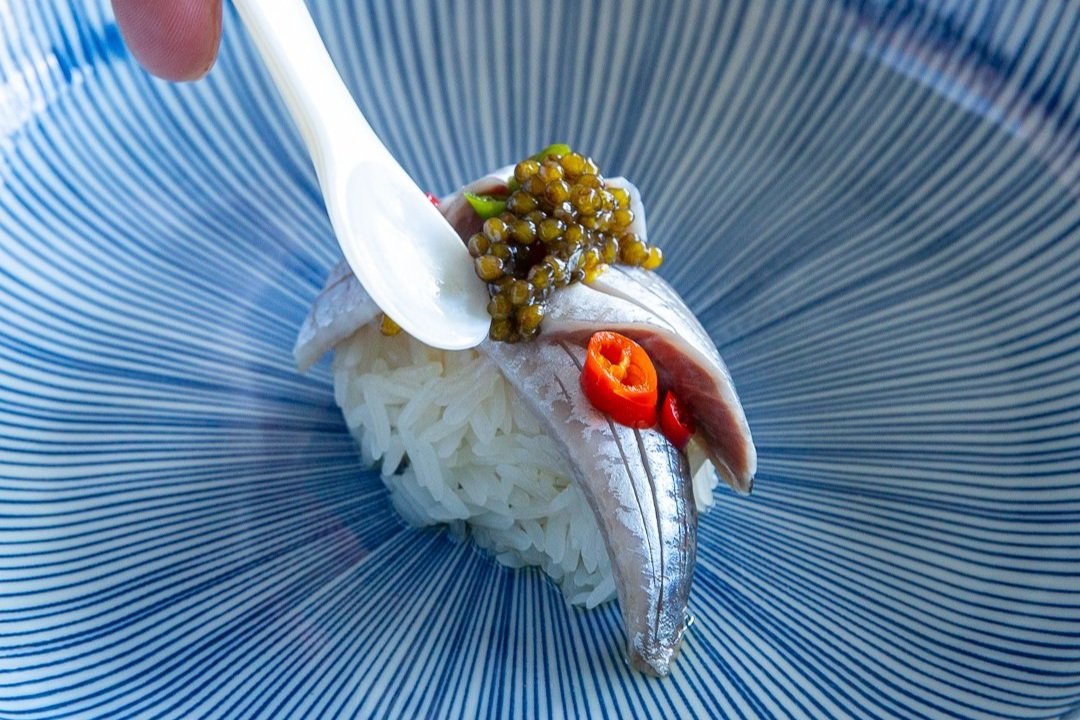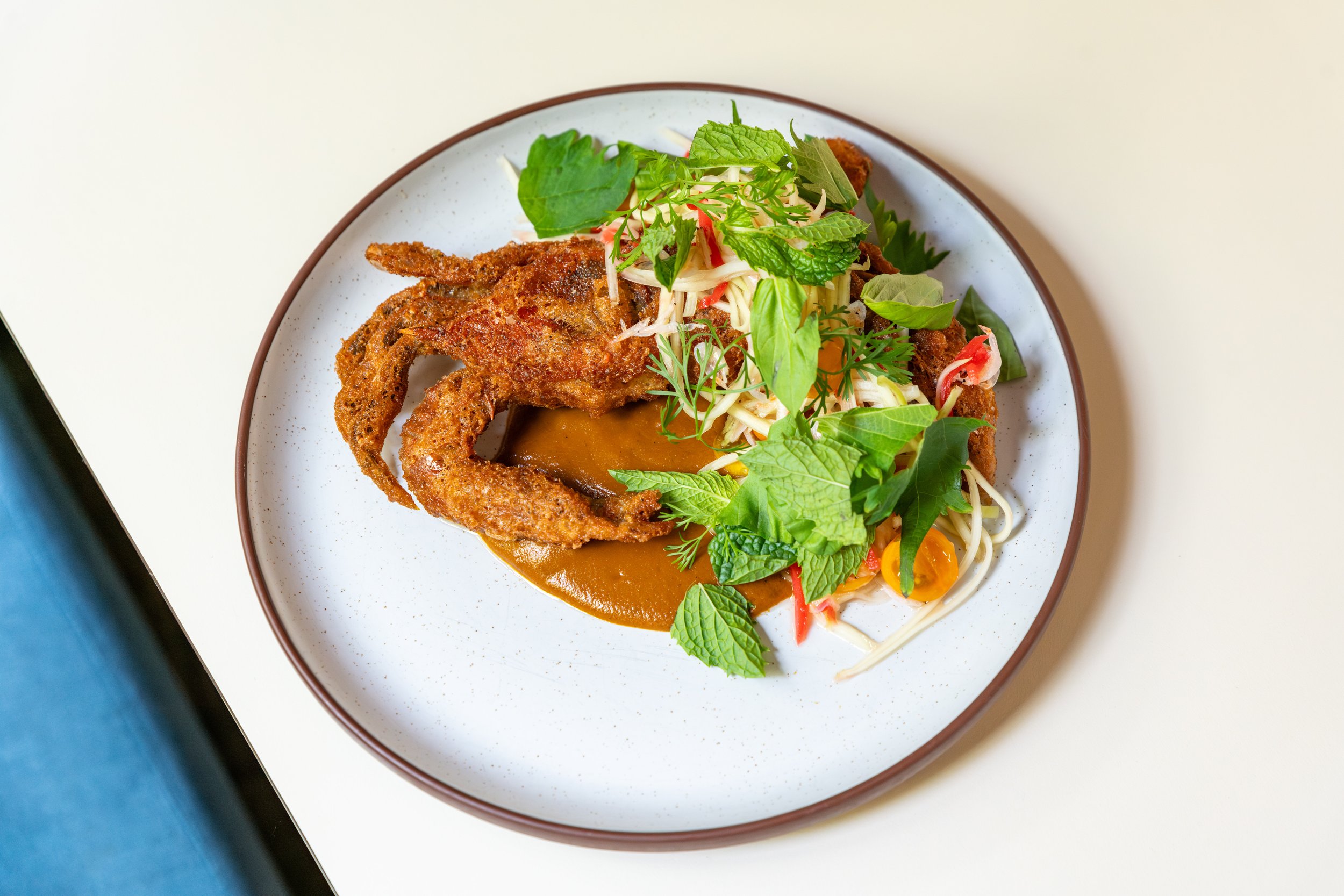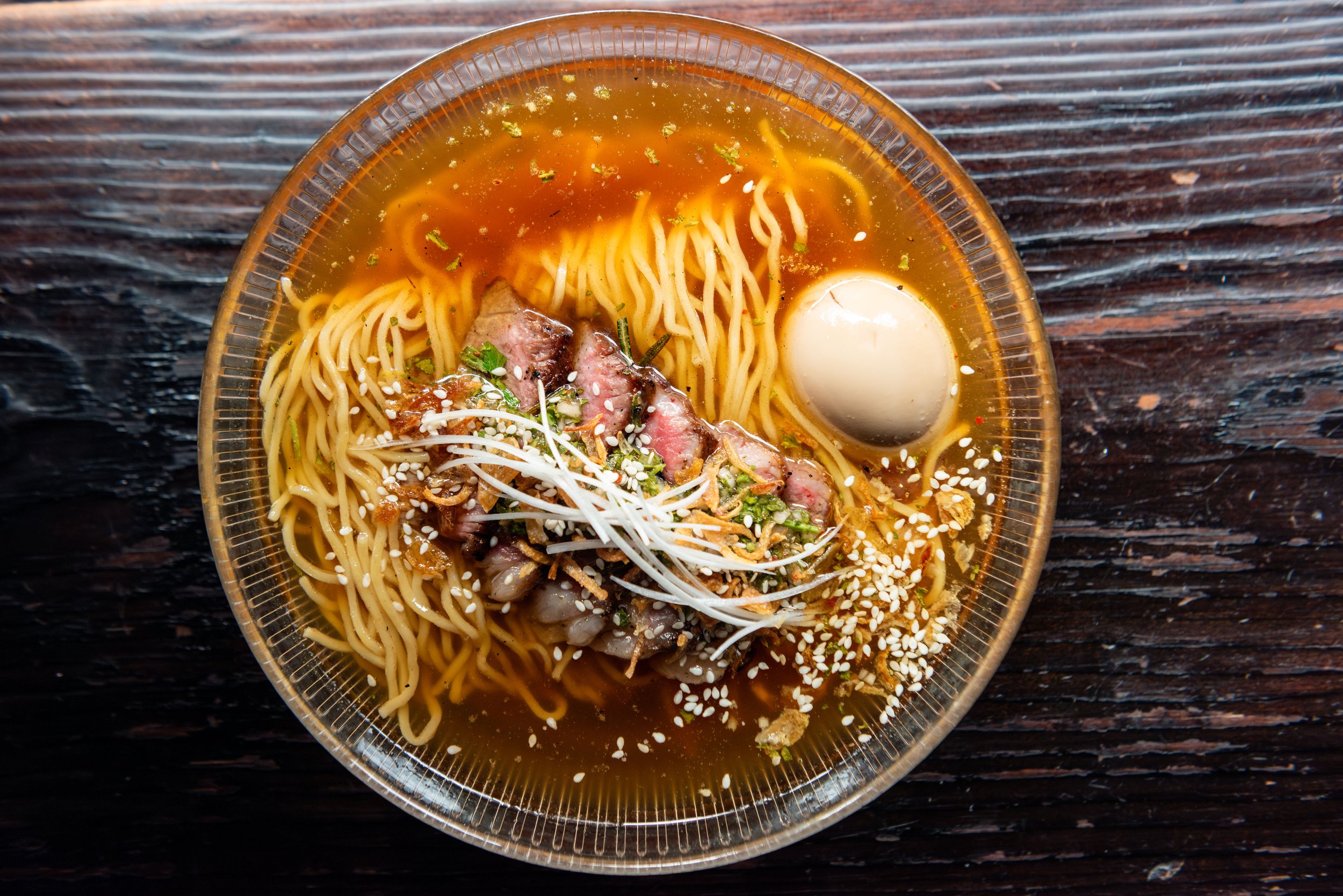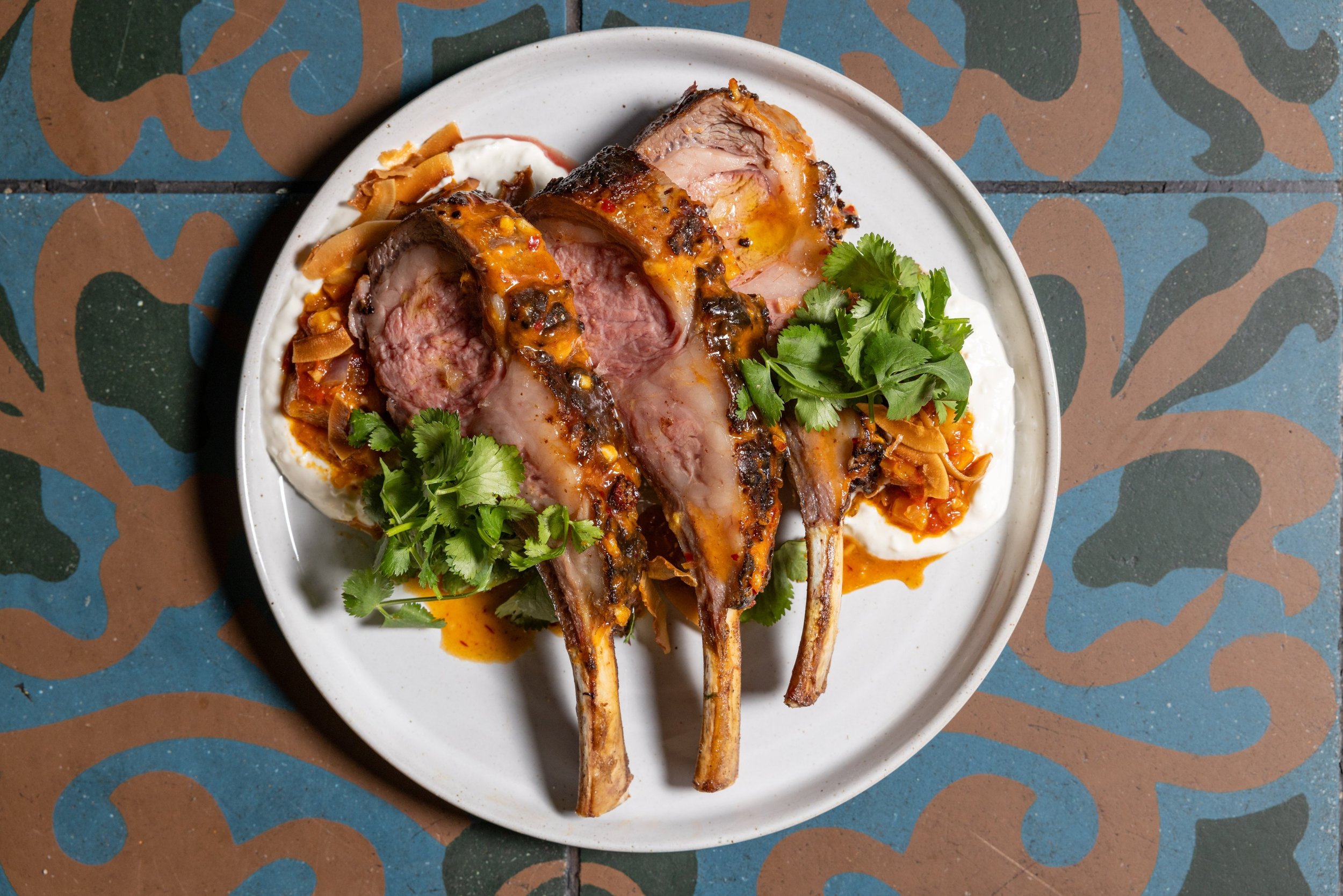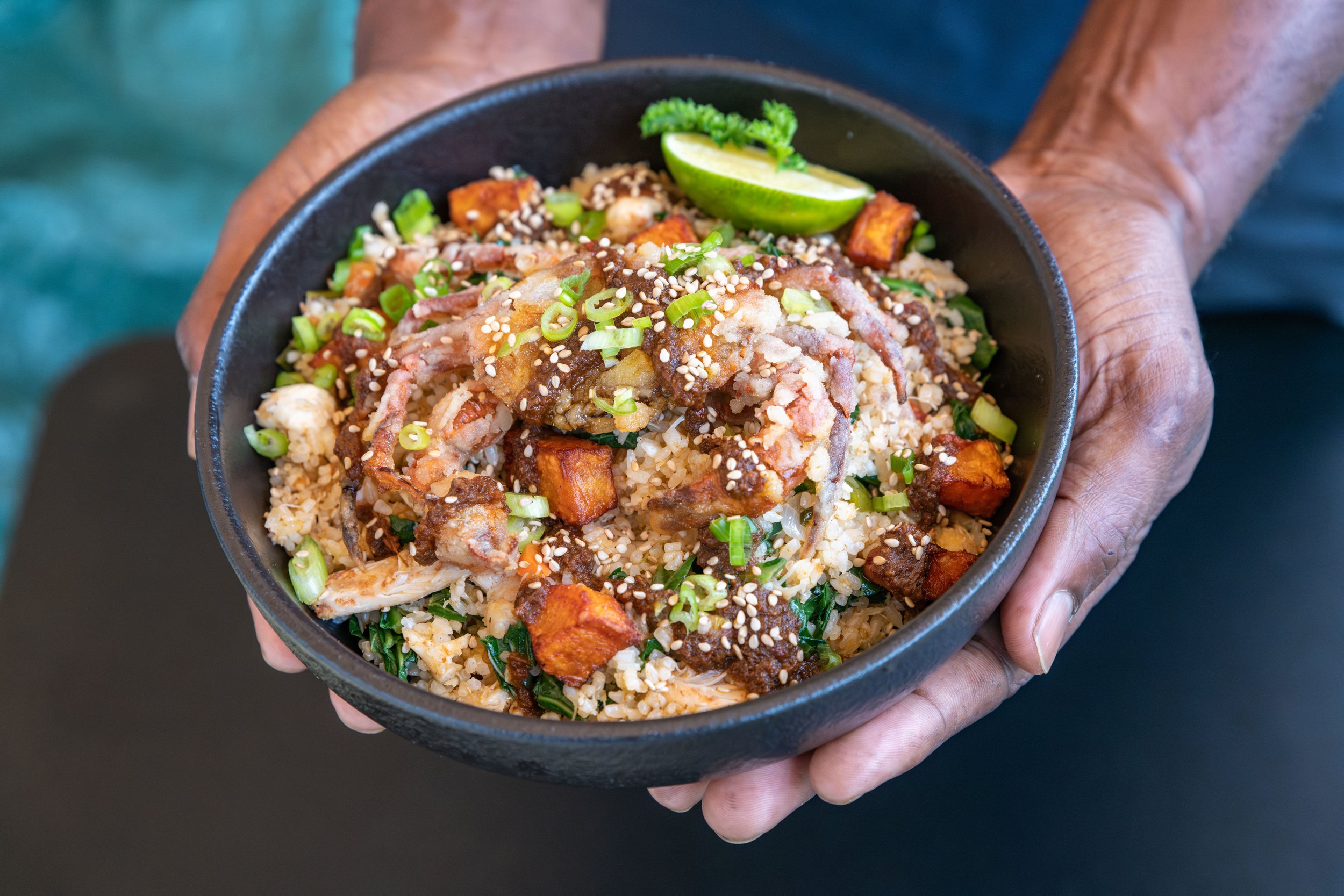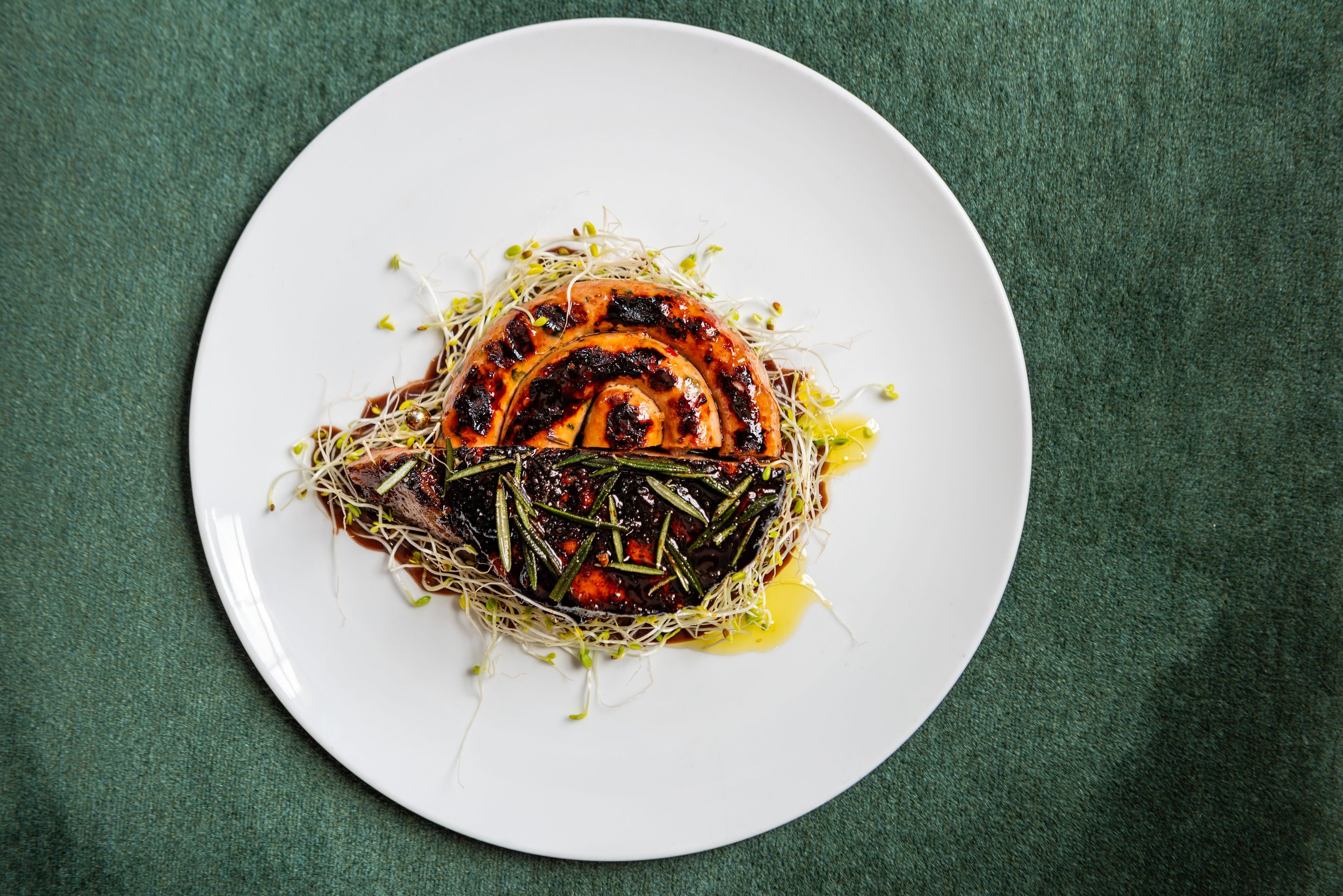Full Asking price
Chef Justin Pichetrungsi of Anajak Thai disrupts the status quo of menu prices. Justin and food writer Dakota Kim discuss price expectations for Thai cuisine.
In our reporting for this issue, we met several restaurant owners who struggle with how to convince the consumer that certain cuisines are worth a higher price. Rising Star Chefs Justin Pichetrungsi of Anajak Thai pushes back against the misconception that Thai food is just takeout food. Dakota Kim dug into the topic with him.
chef Justin Pichetrungsi: of anajAk thai | Photos: Erin Lettera
Dakota Kim: Let’s talk about Thai food. It’s super popular, yet why does everyone expect it to be so cheap? There've been a lot of studies about how setting a higher price will make people think it’s a better product, but it’s obvious to me your food really deserves these prices because of food costs and cooking expertise. How do you work out the pricing and choices for your omakase versus your bistro side of Anajak?
Justin Pichetrungsi: With the omakase, there are no choices for you—it’s really just my choice. For me conceptually, that’s my complement to the Thai bistro side of Anajak because the bistro side is the Tai neighborhood takeout side, and it’s all about what we can do for you and the choices. I probably have the most expensive pad Thai in the city at $16, but my father has been making it since he started the restaurant 40 years ago, and it’s got a lot of ingredients.
DK: Is there a process with you and your family to decide on pricing? I owned a restaurant with my family, and we argued about pricing all the time.
JP: A restaurant is not a museum where you go once and never come back. There’s an art to pricing. We hadn’t raised the prices in three years before the pandemic. But things got more expensive. The pricing of the menu was something we always went over, me and my mom and dad. We would look at how much we want someone to order this versus how much we don’t want someone to order this. We moved pad Thai to $16 to make it something we wanted people to order. I wanted to take pad Thai off the menu, like this New York restaurant Fish Cheeks that has a hashtag called #nopadthaizone.
Dry-aged Kampachi, Sugar Snap Peas, Marinated Ikura, Nam Jim
DK: I love that.
JP: I know, it’s fucking genius. Instead, we charged for it. You’re not only paying for the time and labor of us making it, but we have to include our experience, as well. Picasso would charge $100 for a scribble. It took us 40 years to figure out how to do this pad Thai.
DK: You have every right to charge your prices. How do people react to them?
JP: A lot of people who come to my place already think about this stuff and are already accepting that they’re about to commit to a $125 tasting menu, and I’m very fortunate that people are willing to pay the price. The margin for me is very low, but I think the point of it is to really ask a question, and I think that’s what good cuisine does.
DK: And other restaurants aren’t expected to sell dry-aged fish prepared by experts for $5 or $10.
JP: If we compete price-wise with other places that have similar pricing, then the problem is that we compete. And who wants to compete? I don’t want to compete. I think the neighborhood Thai spot is viable for many people in L.A., but I know that’s not the kind of Thai food I want to eat.
DK: Market forces and cultural forces both shape the diner’s opinions and whether they’ll actually consider that food is worth $14 or $50 or $300, right? Zagat’s 2015 survey showed that a Thai meal for one person at a Zagat-listed restaurant in New York was at the bottom of the price ladder at $32.50 for one person, while Japanese was $68.94.
JP: The dry-aged fish I present on sticky rice resembles a cousin of sushi, and some historians say sushi started in Southeast Asia. I want to know when the hell will Thai cuisine meet the level of perception that sushi has in L.A., in this country, in this world? Is it a marketing problem, a branding problem, an issue of design? The way that Thais see design and package their tourism and craft—is it as fetishized as the vernacular of Japanese cuisine? I ask this question through the deepest admiration and love for sushi. I just want to know why people only want to see Mexican food and Thai food on the street.
DK: They shouldn’t have to do this, but how can restaurant owners market their cuisines so that diners will accept the message that they’re worth that price?
JP: I feel it’s not in the messaging. It’s in the bravery of just doing it and not apologizing. You can’t let the dog smell your fear. Change the price and do it with a smile.
Sardine, Fish Sauce, Kaluga Hybrid Caviar, Thai Chile, Sticky Rice



